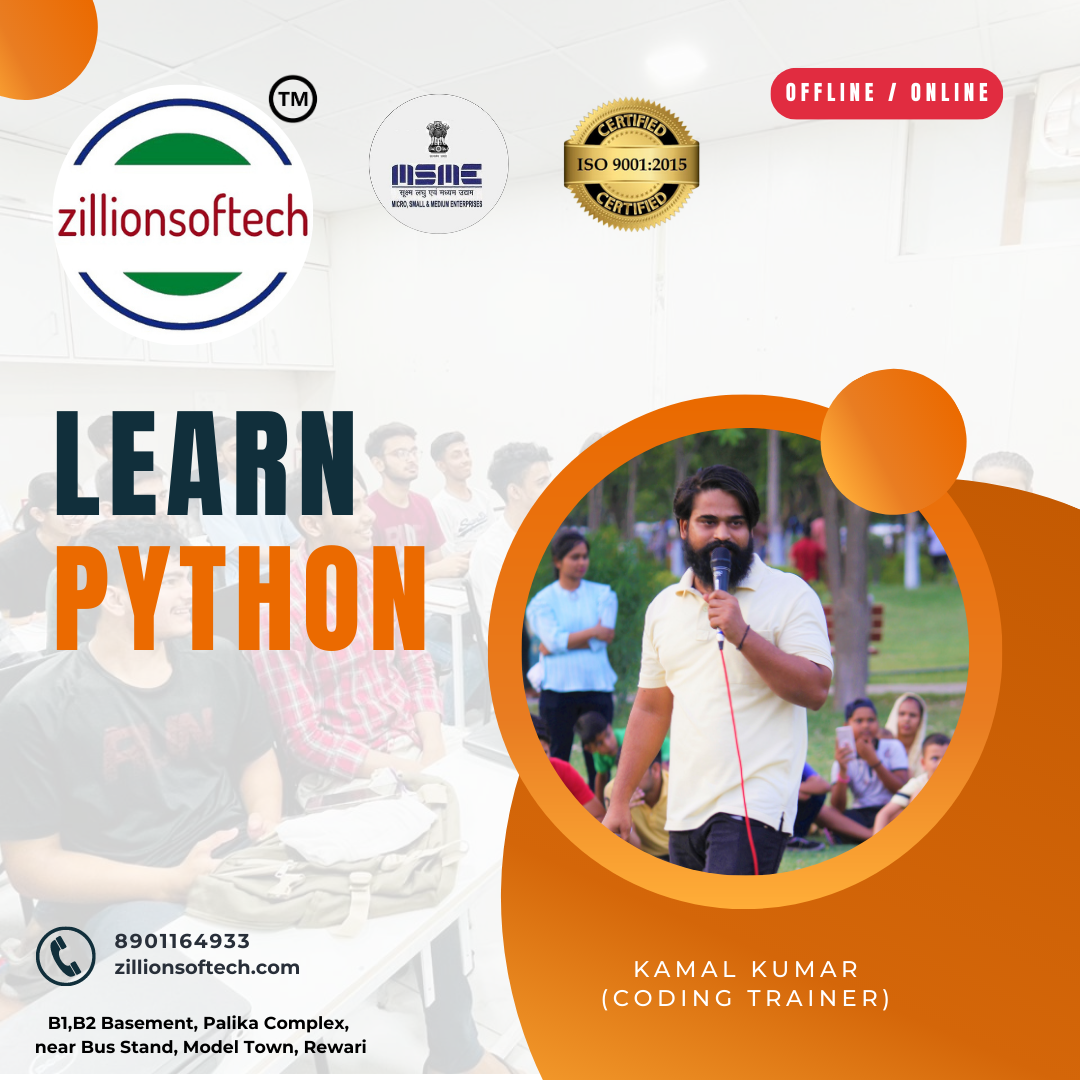Python
What is Python ?
Python is a high-level programming language known for its simplicity and readability. It was created by Guido van Rossum and released in 1991. Python emphasizes code readability and a clean syntax, making it easier to write and understand compared to many other programming languages.
Here are some key features and characteristics of Python:
-
Easy to learn: Python has a straightforward and beginner-friendly syntax, making it an excellent choice for beginners. Its syntax emphasizes readability, using indentation and English-like keywords.
-
Interpreted language: Python is an interpreted language, meaning that code is executed line by line by an interpreter without the need for compilation. This makes the development process faster and more interactive.
-
Cross-platform compatibility: Python is available for various operating systems, including Windows, macOS, Linux, and others. You can write Python code on one platform and run it on another without making significant changes.
-
Large standard library: Python comes with a comprehensive standard library, providing a wide range of pre-built modules and functions for various tasks, such as file handling, network programming, web development, and more. This extensive library saves time and effort by eliminating the need to build everything from scratch.
-
Third-party libraries and frameworks: Python has a rich ecosystem of third-party libraries and frameworks, such as NumPy, Pandas, TensorFlow, Django, Flask, and many more. These libraries extend Python's capabilities for specific domains, such as data analysis, machine learning, web development, and scientific computing.
-
Versatility: Python supports multiple programming paradigms, including procedural, object-oriented, and functional programming. It offers flexibility and can be used for a wide range of applications, such as web development, data analysis, scientific computing, artificial intelligence, automation, and scripting.
-
Community and support: Python has a large and active community of developers worldwide. This community contributes to the development of libraries, frameworks, and tools, provides support through online forums and resources, and promotes the sharing of knowledge and best practices.
Python's popularity has grown significantly in recent years due to its simplicity, versatility, and extensive ecosystem. It is widely used in various fields, including web development, data science, machine learning, artificial intelligence, scientific research, and system administration.
Syllabus
-
Introduction to Python:
- Overview of Python's history, features, and advantages
- Setting up Python development environment
- Running Python programs
-
Python Basics:
- Variables, data types, and basic operators
- Control flow statements (if-else, loops)
- Functions and function parameters
- Input and output operations
-
Data Structures:
- Lists, tuples, and dictionaries
- Sets and frozensets
- String manipulation
- List comprehensions
-
Object-Oriented Programming (OOP):
- Introduction to OOP concepts (classes, objects, inheritance)
- Encapsulation, polymorphism, and abstraction
- Exception handling
- File I/O operations
-
Modules and Packages:
- Creating and importing modules
- Exploring Python's standard library
- Installing and using third-party packages
-
Advanced Topics:
- Regular expressions
- Error handling and debugging techniques
- Lambda functions and functional programming concepts
- Decorators and generators
- Working with files and directories
- Introduction to database programming with Python
-
Web Development (Optional):
- Introduction to web development with Python
- HTML and CSS basics
- Introduction to web frameworks like Flask or Django
- Building a simple web application
-
Data Analysis and Visualization (Optional):
- Introduction to data analysis with Python
- Working with NumPy and pandas libraries
- Data cleaning and manipulation
- Data visualization using libraries like Matplotlib or Seaborn
-
Additional Topics (Optional):
- Concurrency and multithreading
- Network programming with Python
- Web scraping
- Introduction to machine learning with libraries like scikit-learn
History
The name "Python" was inspired by the British comedy group Monty Python's Flying Circus. Guido van Rossum wanted a short, unique, and slightly mysterious name for the language, and he was a fan of Monty Python's shows.
Python is a high-level programming language that was created by Guido van Rossum and first released in 1991. Guido van Rossum began developing Python in the late 1980s at the National Research Institute for Mathematics and Computer Science in the Netherlands. He wanted to create a language that was easy to read, had a clear and simple syntax, and emphasized code readability.
Python's design philosophy focuses on code readability, with the idea that developers should be able to write clear and concise code that is easy to understand. One of the key principles of Python, often referred to as the "Zen of Python," is that "Readability counts." This philosophy has made Python popular among beginners and experienced programmers alike.
Python gained popularity gradually over the years, with version 1.0 being released in January 1994. The language continued to evolve, and Python 2.0 was released in October 2000, introducing several new features and improvements.
However, Python 2 and Python 3 were not fully compatible, which led to a split in the Python community. Python 3 was released in December 2008, and it included significant changes and improvements over Python 2. The transition from Python 2 to Python 3 took several years, but eventually, Python 3 became the recommended and widely adopted version of the language.
Python's popularity surged in the 2010s due to its simplicity, versatility, and a wide range of libraries and frameworks. It has become one of the most widely used programming languages in various domains, including web development, data analysis, scientific computing, artificial intelligence, and machine learning.
The Python Software Foundation (PSF), a nonprofit organization, was established in 2001 to support and promote the development of Python. The PSF maintains the official Python language reference, manages the development process, and supports the Python community.
As of my knowledge cutoff in September 2021, the latest stable version of Python is Python 3.9, which was released in October 2020. However, please note that there may have been newer versions released since then. Python continues to evolve, with new features, improvements, and updates being added regularly to enhance the language and its ecosystem.
